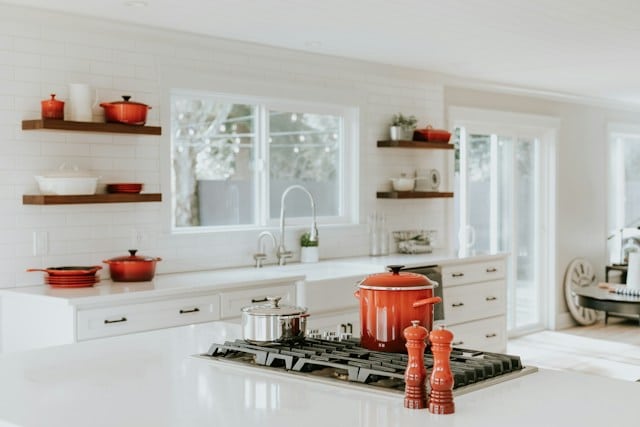What Are the Best Techniques for Waterproofing a Basement Home Gym?

When it comes to home improvements, the basement often takes a backseat. But when you consider that this overlooked space holds huge potential, it’s worth reconsidering its worth. A basement can be transformed into a multitude of useful spaces – a home office, a playroom, a man cave, and of course, a home gym. Yet, all these transformations hinge on cracking the code of the most common basement problem – water.
A basement home gym offers convenience that’s hard to match. No more gym fees, no more waiting for equipment, and no more commuting. However, to ensure your home gym remains a healthy and inviting space to exercise, it’s essential to waterproof the basement.
A lire en complément : How Can You Design a Noise-Minimizing Nursery Adjacent to a Home Cinema?
Waterproofing your basement home gym involves protecting your home’s foundation from water seepage, managing moisture, ensuring proper drainage, and choosing the right flooring. It’s a complex process, but with the right knowledge and tools, it can be an achievable project.
Understanding the Importance of Waterproofing
Before diving into the specifics of basement waterproofing, it’s crucial to understand why it’s necessary. Basements, by virtue of being the lowest point of your home, are prone to moisture issues. Moisture can seep into your basement through walls, floors, and cracks in the concrete. Over time, this can lead to mold and mildew, which aren’t just unpleasant to look at, but also pose significant health risks.
Sujet a lire : How to Design an Ergonomic Sewing Room for Quilting Enthusiasts?
A damp basement can also lead to structural damage to your home. Moisture can weaken the foundation, cause cracks, and even lead to flooding. Additionally, a wet environment is not conducive to a workout space. Not only will your equipment be at risk of damage, but the high humidity can also make your workouts uncomfortable.
By waterproofing your basement, you’re not only creating a safe and comfortable home gym, but also safeguarding your home’s structural integrity.
Analyzing Your Basement
Before you start waterproofing, conduct a thorough analysis of your basement. Look out for signs of water damage such as cracked or damp walls, a musty smell, or white chalky substance on the walls known as efflorescence. These symptoms are indicators of a moisture problem, and identifying them early can save you from more extensive repairs down the line.
Check the outside of your house as well. Look at the ground slope around your home. Ideally, it should slope away from your foundation. If it doesn’t, rainwater can pool near your home, increasing the chances of it seeping into your basement.
Also, examine your gutters and downspouts. They play a crucial role in guiding rainwater away from your home. If they’re clogged or not functioning correctly, they can cause water to flow towards your foundation.
Finally, assess the state of your basement floor. If it’s a bare concrete floor, it’s more susceptible to moisture seepage. Consider installing a waterproof flooring to protect from water damage.
Implementing a Drainage System
One of the best methods to waterproof a basement is by installing an effective drainage system. This will help divert water away from your basement, preventing any potential moisture issues.
A common drainage style is the French drain system. This involves installing a pipe around the perimeter of your home that collects water and diverts it away from your foundation.
You may also consider installing a sump pump in your basement. A sump pump collects water in a basin and pumps it outside, away from your house. It’s a great solution for basements that experience significant water seepage.
Keep in mind that the installation of a drainage system can be a complex process and often requires expert help.
Waterproofing the Walls and Floor
The walls and floor of your basement are the frontline defense against water. Therefore, ensuring they’re waterproof is critical.
Start by sealing any cracks or gaps in the walls and floor with a waterproof sealant. This will prevent moisture from seeping into your basement.
Next, consider applying a waterproof coating to the walls and floor. These coatings form a barrier that protects against water penetration.
For an added level of protection, consider installing a waterproof membrane on the walls. These membranes are made of rubberized asphalt, which is highly resistant to water.
When choosing flooring for your basement home gym, consider materials that are water-resistant, such as rubber or vinyl. These materials will not only protect your floor from water damage but also provide a comfortable surface for your workouts.
Regulating Moisture with a Dehumidifier
Even with all these measures in place, basements can still be prone to high humidity. To tackle this, invest in a dehumidifier.
A dehumidifier works by removing excess moisture from the air, effectively controlling the humidity levels in your basement. This can prevent mold and mildew growth and make your home gym a more comfortable space to exercise.
Remember to regularly empty the dehumidifier and keep it clean to ensure it’s working effectively.
In conclusion, waterproofing your basement home gym involves a combination of techniques; from analyzing your basement to installing a drainage system, waterproofing your walls and floors, and regulating the humidity levels. By taking these steps, you can create a home gym that’s not only inviting but also healthy and safe.
Exterior Waterproofing for Long-Term Protection
Waterproofing your basement from the inside is a crucial step, but waterproofing the exterior of your home adds an extra layer of defense against water seepage. This method is often more complex and can require professional help, but the benefits it brings in terms of preventing water damage can be invaluable in the long run.
A common technique for exterior waterproofing involves applying a waterproof coating or membrane to the exterior walls of the foundation. This creates a barrier that helps prevent water from seeping into the basement walls. Remember that this measure is more effective when combined with other strategies, such as maintaining a good exterior drainage system.
The exterior drainage system is the first line of defense against water entering your home. It includes elements like gutters, downspouts, and grading. The gutters should be clean and free of debris to allow rainwater to flow freely. Downspouts need to be directed away from your home to avoid pooling water around the foundation. Moreover, the slope of the ground around your home should direct water away from the foundation.
Another critical aspect of exterior waterproofing is managing the hydrostatic pressure exerted by groundwater on the basement walls. This pressure can lead to cracks and leaks in your walls, and even a well-maintained drainage system may not be enough to prevent it. This is where a sump pump comes in handy. A sump pump can help in relieving the hydrostatic pressure by pumping out the water that accumulates around your house, thus preventing water seepage and subsequent water damage.
The Role of Insulation in Your Basement Home Gym
In addition to waterproofing, proper insulation is also crucial in maintaining a comfortable and safe living space in your basement home gym. Insulation helps in regulating the temperature of your basement, making it an inviting space no matter the season. Moreover, it can also help in reducing the likelihood of condensation, which can contribute to mold growth.
Insulating your basement walls can be achieved in several ways. One effective method is using spray foam insulation. This type of insulation is great at blocking both air leakage and water vapor, making it an excellent choice for basements.
Another method is using rigid foam boards. These boards offer high insulative value and are resistant to moisture, making them a suitable choice for basements. As a bonus, they can also help in reducing noise, making your gym sessions more enjoyable.
You should remember that insulation should be installed in conjunction with a vapor barrier. The vapor barrier can be applied to both the walls and floor of your basement, and it’s designed to prevent moisture from seeping into your insulation and living space.
Conclusion: Enjoying a Dry, Comfortable Home Gym
Waterproofing your basement home gym is a crucial step in creating a comfortable and healthy living space. From analyzing your basement for signs of water damage to exterior and interior waterproofing, implementing a drainage system, managing hydrostatic pressure with a sump pump, and even insulating your space against condensation and mold growth, every step is crucial. It’s a complex process that might require time, effort, and sometimes professional help, but the benefits of having a dry, comfortable home gym make the process entirely worthwhile. With your basement gym safe against water damage, you can focus on what really matters: your fitness journey.
